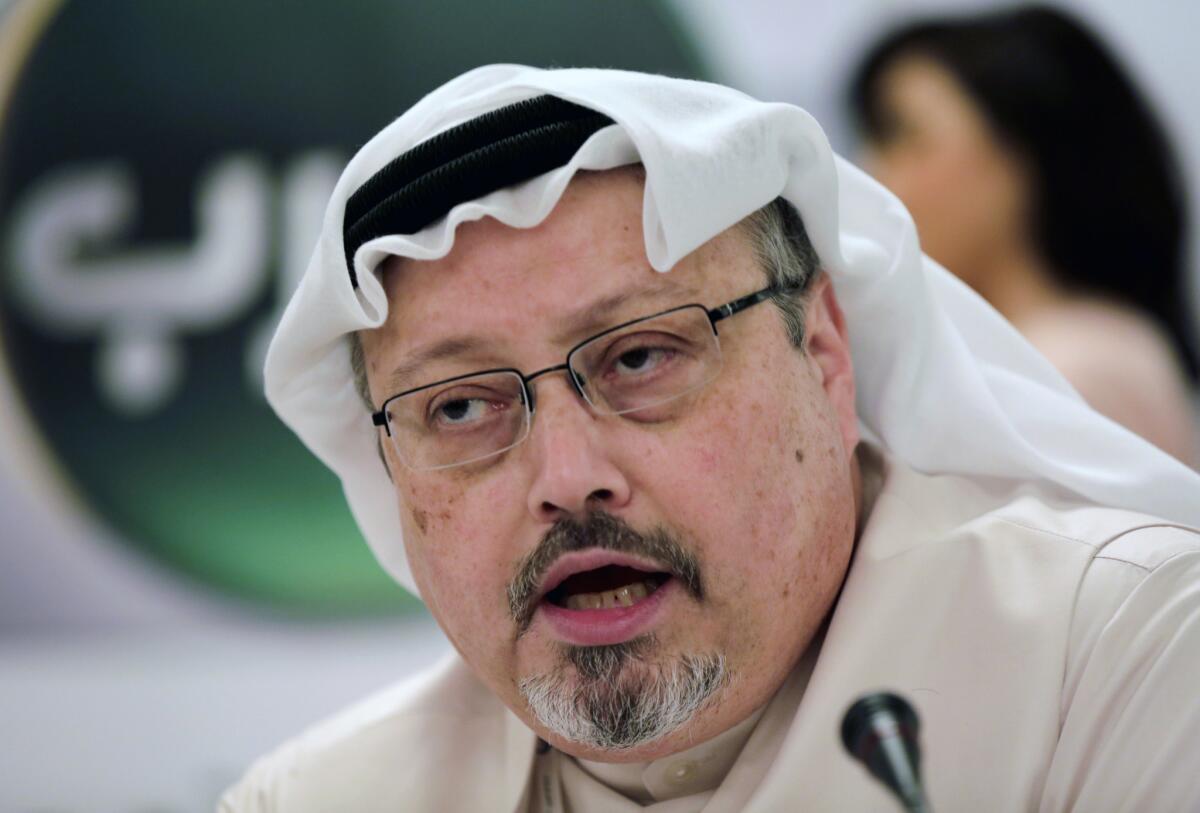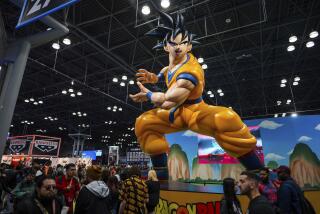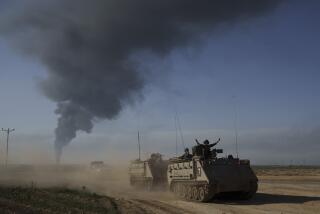Commentary: Why the Desert X art festival deal with Saudi Arabia is morally corrupt
Desert X, the biennial exhibition of site-related installation art shown throughout Palm Springs and the Coachella Valley, recently announced a dramatic move into international territory. The details, however, instead mark the beginning of the end for a once-promising art event.
Starting Jan. 31, Desert X will mount a show in Saudi Arabia. Its website says the intent is to connect global desert locations through contemporary art and artists. The inaugural 2017 Coachella exhibition was auspicious, and this year’s installment was intermittently engaging, if muddled overall. But the upcoming Saudi segment makes achieving the goal hopeless.
There’s no mystery as to why. Saudi Arabia is an absolute monarchy built on theocratic law. Free expression is forbidden. Illegal. A criminal act.
The modern idea of art is exactly opposite. Apostasy — the abandonment or renunciation of official or establishment belief — is integral to it. A diverse cosmopolitan culture cannot function without free expression.
In Saudi Arabia, however, apostasy is punishable by death. Unless artists are willing to make their host’s state control of expression an explicit subject of their work, those who participate cannot escape compromise from the polluted context.
The timing of the exhibition’s announcement could hardly have been worse. Just days before, Saudi Crown Prince Mohammad bin Salman, 34, publicly acknowledged his responsibility, almost exactly one year earlier, for the grisly killing of Washington Post columnist and Saudi national Jamal Khashoggi. A critic of the crown prince, Khashoggi was lured to the Saudi Embassy in Istanbul and strangled, his body dismembered with a bone saw and its pieces spirited out of the building. Those pieces remain hidden, the forensic secrets they hold too dangerous for the killers.
The acclaimed Coachella Valley art event Desert X opens in Saudi Arabia in 2020, sponsored by the government that assassinated journalist Jamal Khashoggi.
MBS, as the brand-conscious young prince is called, denied having issued a direct order for the killing. (Let’s call the claim no collusion.) Not only do the CIA and a U.N. report bluntly dispute his demurral but they also point a finger squarely at his former media adviser, Saud Qahtani, as the death squad’s likely supervisor.
The New Arab, a Qatari news outlet, has dubbed Qahtani the Saudi Steve Bannon. Qahtani was MBS’ go-to guy for controlling the image of Saudi Arabia as a liberalizing and prosperous country under the prince’s emerging leadership. He was supposedly canned in wake of the Khashoggi tragedy. Twitter shut down his once-active social media feed, which had earned him the nickname Mr. Hashtag.
The bad timing of the Desert X announcement couldn’t be helped, though. A long-planned September start to a foreign visa program demanded a public relations blitz by MBS. Boosting cultural tourism, hitherto forbidden by the state, is integral to his plan for diversifying the nation’s oil-based economy.
The January exhibition is taking place under the auspices of the Royal Commission for AlUla, a government agency headed by MBS to promote monuments in an ancient desert crossroads 200 miles northwest of the Islamic holy city of Medina, burial site of the prophet Muhammad. Like Desert X, launched to piggyback on the hugely successful Coachella music festival, Desert X AlUla coincides with Winter at Tantora, a big music festival nearby.
Last year’s Tantora headliners were Andrea Bocelli and Yanni, not exactly Coachella’s Childish Gambino and Ariana Grande. Those two booty-shakers would likely be arrested at Tantora the moment their sets were over. The annual report from Freedom House, the nonprofit that ranks global states in democratic rights and civil liberties, lists Saudi Arabia as the eighth worst of 195 countries around the globe. The kingdom is tied near the bottom with Somalia and Sudan.
Desert X claims its intent is to connect global desert locations through contemporary art and artists, but Somalia and Sudan have deserts too. Unlike Saudi Arabia, what they don’t have is money.
Somalia’s per capita GDP is $426. Sudan’s is $2,514. Saudi Arabia’s is $20,653. So that’s where all the high-minded desert cultural connecting will be going on, murder and mayhem be damned.
Still, Saudi Arabia is in trouble. Oil, source of most of the kingdom’s immense wealth, is in doubt as a permanent economic driver in a world where catastrophic climate change is pushing investment toward alternatives to fossil fuels. Short term, things are fine. Long term, cultural tourism and other business projects must pick up the slack.
Vision 2030, the sweeping state-makeover MBS unveiled with great fanfare three years ago, is meant to address the need. But the goal is not merely “a vibrant society, a thriving economy and an ambitious nation,” as its sound-bite section headings have it. The bigger aim is to keep the Saudi royal family in power.
The upcoming show is a royal business deal. To promote cultural tourism, the House of Saud better have some event-driven culture to tour. Two-thirds of Saudi Arabia’s population is under age 30, and their use of social media, especially Twitter, is among the highest in the world. An art and music festival might light up social media, as it does at Coachella, catapulting the new tourist market.
Desert X artistic director Neville Wakefield is working with two Saudi programmers, Raneem Farsi and Aya Alireza, whose backgrounds are in the art business. Both graduated from Sotheby’s commercially geared Institute of Art in London, where Farsi wrote her thesis on the nascent development of an art market in the desert kingdom.
A roster of artists has not yet been announced. (Reportedly, half will be from Saudi Arabia, while others will be drawn from participants in the two previous American editions.) Why any artist would want to participate in securing the longevity of a barbaric medieval idea of absolute monarchy remains a mystery.
Royal interest in international cultural engagement began more than a decade ago, when plans were unveiled for the massive King Abdulaziz Center for World Culture at the Dhahran headquarters of the Saudi Arabian Oil Co., better known as Aramco. Construction delays postponed the full opening, targeted for 2016, to April of this year.

The inaugural exhibition, open until March, is “Beauty and Identity: Islamic Art From the Los Angeles County Museum of Art,” featuring 130 works from its important collection. A museum spokesperson said the financial arrangements are confidential, but an exhibition agreement with a foreign business entity rather than another nonprofit institution is highly unusual, if not unprecedented.
The collection loan (or rental) is also not without risk.
One of the two Aramco oil facilities bombed in a fiery September drone attack, apparently launched by Iran, is just 45 miles down the highway. In response, President Trump announced the deployment of 1,800 additional U.S. troops to Saudi Arabia. The Abdulaziz Center is not known to have experienced any damage in the bombing, but what steps might be taken now to secure LACMA’s collection amid escalating regional tensions are unclear.
Money is, of course, behind all of it. The crown prince spends big on art. He was identified by the Wall Street Journal as the 2017 buyer of Leonardo da Vinci’s “Salvator Mundi,” the world’s most expensive painting at $450 million. (It has since gone missing and is not expected for the imminent Leonardo exhibition at the Louvre Museum.) MBS personally endows the Misk Art Institute, with headquarters in Riyadh, a platform for new art.
Desert X’s founder and board chairwoman, Susan Davis, herself a marketing professional, repeats the vapid standard talking point for teaming up with one of the world’s cruelest, most oppressive and richest political regimes, saying: “It is better to engage than to isolate.” She sounds like Laurence Fink, chief executive of the world’s largest asset manager, BlackRock, who said essentially the same thing when he rationalized his company’s planned participation in this week’s Future Investment Initiative in Riyadh — the so-called “Davos in the desert” meeting.
“Corporate leaders should be having a public dialogue about (the monarchy),” he said on LinkedIn. “Not because everything in Saudi Arabia is perfect — but precisely because everything is not.”
Last year, many bankers boycotted the meeting in the immediate, PR-treacherous aftermath of Khashoggi’s slaughter. Now, distance lends enchantment to the view.
The Desert X board also likes what it sees — except, that is, for artist Ed Ruscha, art historian Yael Lipschutz and patron Tristan Milanovich, all of whom deserve congratulations for quitting the board in appropriate disgust. (Eleven others stayed on.) The L.A.-based MaddocksBrown Foundation also pulled the plug on future funding. Given all their withering public statements to The Times and others, they know full well that Desert X AlUla is merely putting lipstick on a pig.
The final column Khashoggi wrote just before his killing is a pointed lament for the dangers wrought by the absence of free expression in Saudi Arabia. Without it, Arabs “are unable to adequately address, much less publicly discuss, matters that affect the region and their day-to-day lives.”
Khashoggi paid for that opinion with his life. The column, which the Post published posthumously, was headlined, “What the Arab World Needs Most is Free Expression.” Desert X AlUla — or, to be blunt, Desert Bonesaw — will do nothing to help achieve it.
More to Read
The biggest entertainment stories
Get our big stories about Hollywood, film, television, music, arts, culture and more right in your inbox as soon as they publish.
You may occasionally receive promotional content from the Los Angeles Times.







